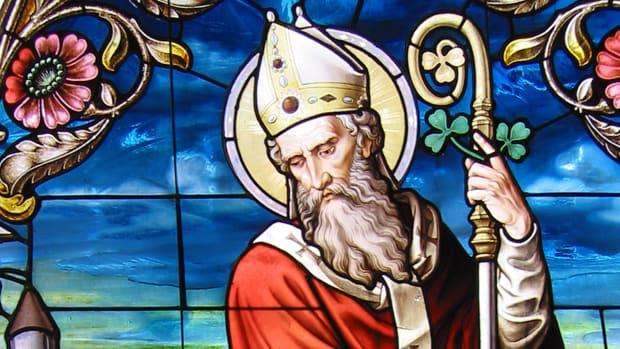The Story Behind the Patron Saint of Ireland (and our School!)
As one of Christianity’s most well-known and most celebrated figures, St. Patrick lived a rich life that supported the spread of Christianity through a variety of means.
Patrick was born in fourth-century Britain to wealthy parents. Although his father was a Christian deacon, his family wasn’t known to be very religious. When Patrick was just 16 years old, he was kidnapped by Irish raiders who were after his family’s property. The Irish raiders took him away from his family and took him back to Ireland. For years he worked under their orders as a shepherd in County Mayo, Ireland. He was immersed in their culture and quickly became fluent in the Irish language. However, in need of comfort during his constant time alone, he turned to religion. In a short time, he became a dedicated and passionate Christian who enjoyed learning about God and enjoyed sharing his love of God with the Irish people.
After six years of being held prisoner, it is believed he heard God’s voice tell him it was time to leave Ireland and escape from the Irish raiders. He listened to what God told him and was able to successfully escape. He walked over 200 miles from where he was being held to the Irish coast where he was then able to return to his homeland of Britain.
During his long journey back to Britain, he dreamt of an angel. He wrote that the angel was telling him to return to Ireland as a missionary. Once he returned to Britain, he followed what the angel told him in his dream and he decided to start religious training for the next 15 years before becoming a priest. Then Patrick returned back to Ireland with hopes of ministering to the small population of Christians that lived there and to begin converting the Irish.
When he arrived in Ireland for the second time, he began sharing his love of God with all. He was familiar with the Irish, and since the Irish culture focused on oral legend and myth – St. Patrick combined the Irish culture and their native beliefs with the Christian lessons he was teaching. To convert the pagan people of Ireland to Christianity, he combined the sun with the Irish symbol on the cross to create a Celtic cross and also celebrated Easter with bonfires since the Irish typically honored their gods with fire.
St. Patrick lived, traveled, worked, and taught all throughout Ireland for over 40 years. By his death on March 17th 460 A.D in Ireland, St. Patrick was credited with bringing Christianity and monasticism to Ireland by forming over 300 churches and baptizing over 100,000 Irish people.
Learn more about how St. Patrick inspires our spiritual formation and academics at St. Patrick Academy by clicking here.




